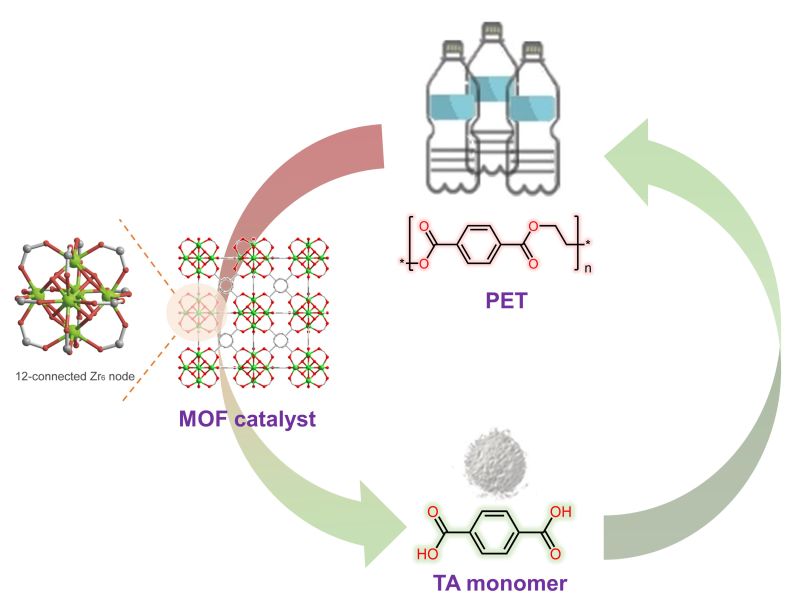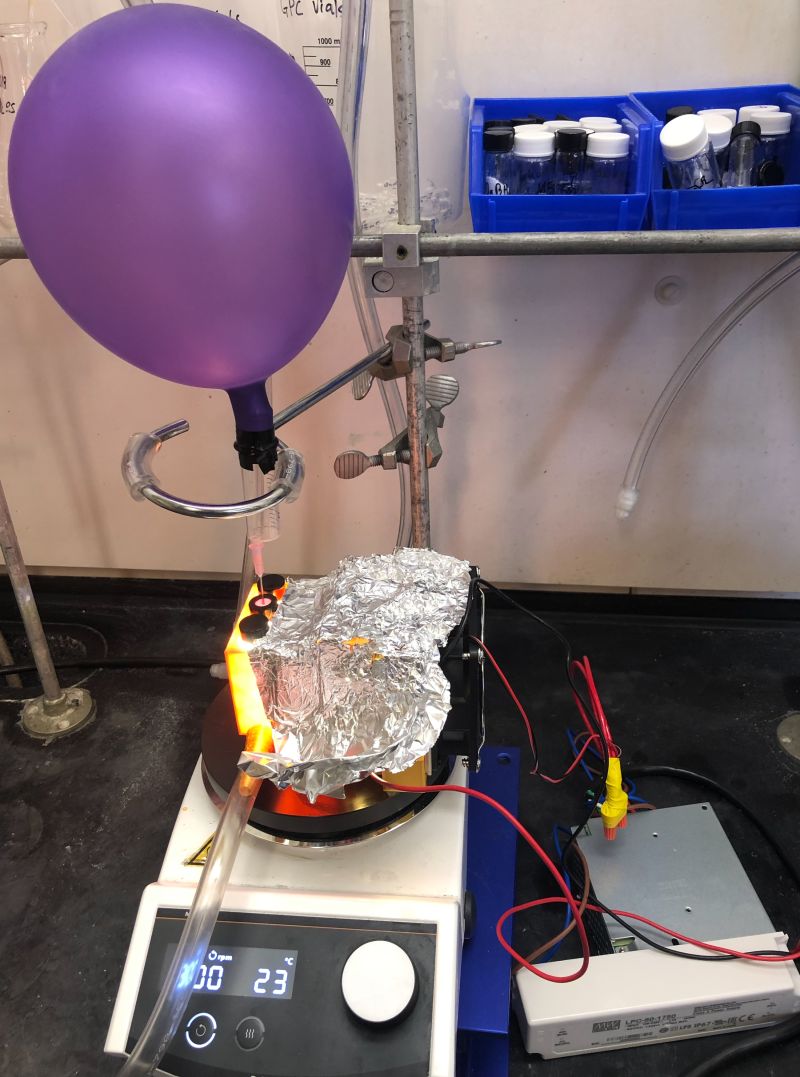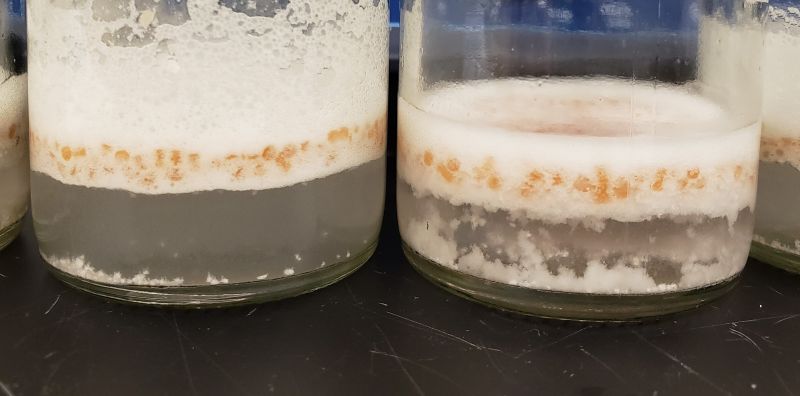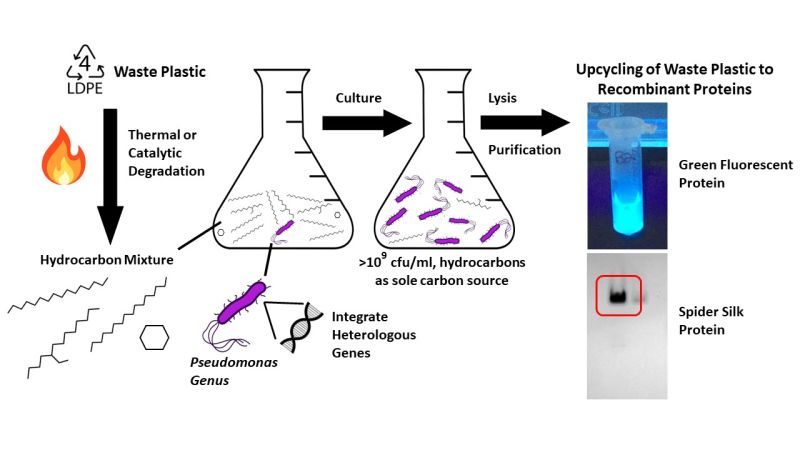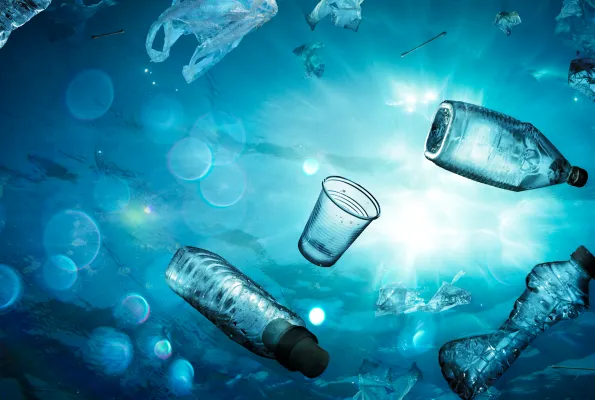
NSF grantees solving problems created by single-use plastics
The world's oceans play a critical role in supporting life on Earth, but they are under threat from human activities. Single-use plastic waste is one of the six major contaminants identified by researchers as a primary threat to our oceans.
Despite society's best efforts, most plastic materials are too complex to be efficiently recycled with existing technologies. A single piece of plastic waste may contain a variety of polymers, additives, dyes or even other materials such as metals and adhesives.
Researchers across multiple scientific disciplines are working on innovative ways to address this issue, with multiple directorates in the U.S. National Science Foundation powering both basic and applied research efforts. Read below to learn about just a few NSF-supported efforts.
1. Reducing plastic bottles to basic components for reuse
Researchers at Northwestern University have demonstrated that a new material can help break down polyester-based plastic. Discarded water bottles were chopped into pieces and then heated. Hydrogen and the catalyst, described as a "metalorganic framework," were then used to sever an ester bond to degrade the plastic, transforming it into terephthalic acid, a chemical used in manufacturing. The method was effective on bottles of different colors and different types of plastics. "The research helps address long-standing challenges associated with plastic waste and opens up new areas and applications for metalorganic frameworks," said Omar Farha, corresponding author of the study.
2. Harnessing solar power to upcycle plastic waste
A team of chemists at Cornell University devised a climate-friendly process to upcycle polystyrene, which is used for many packaging purposes and often ends up in landfills. Employing catalyst-controlled photooxidation, a process which uses light, oxygen and an iron-based catalyst, the team converted polystyrene into benzoic acid. The process is effective on polystyrene of every form and texture and is scalable. "If we can make the process even more efficient, we can think about how to commercialize it and use it to address waste streams," said study co-author Erin Stache.
3. Measuring microplastics in water in real time
Microplastics can deposit and linger in riverbeds for as long as seven years. Applied Ocean Sciences is developing a method to detect microplastic concentrations in bodies of water using a real-time sensor that measures ultrasonic frequencies. The sensor will record different resonant and scattering responses of the suspended plastic particles based on size, shape and material properties. This will allow measurements to be taken quickly and easily to determine microplastics levels in oceans, lakes and streams, as well as in wastewater and drinking water treatment plants, desalination plants, agriculture irrigation lines and factory runoff streams.
4. Using reclaimed plastic for 3D printing
Re:3D has developed industrial printers, named Gigabots, that use reclaimed plastics and provide the capability to conduct rapid prototyping, mass customization and low-cost fabrication. The fused filament fabrication method of additive manufacturing uses a continuous thread of thermoplastic material fed through a heated printer to form layers. But this method is limited by access to materials. Re:3D uses plastic recyclables and feeds them directly as pellets or shavings into a printer, and hardware allows for easy switching between raw materials. The printers are well suited for low-volume industrial manufacturing for price sensitive and emerging markets, the company said.
5. Recycling plastics to improve agricultural health
The carbon contained within mixed plastic waste is a significant pollutant, but Biko Biolabs is developing a method to recycle non-recyclable plastics into a compost-like material. This process could be used by small, remote, rural, marginalized and underrepresented communities to achieve sustainable, domestic solid waste management as well as build and regenerate soil health for local agriculture. The products will be further studied in greenhouse and field trials to evaluate key agronomic indicators, such as amendment-microbe interactions, soil health, productivity and others.
6. Plastic-eating bacteria could fight waste — and produce silk
A team of engineers at Rensselaer Polytechnic Institute are working on genetically engineering a microorganism that "eats" petroleum-based plastic waste. This could then be used as energy to produce artificial silk, a biodegradable protein that can behave much like traditional plastic. A barrier to using silk as a replacement for traditional plastic is that it's hard to produce from nature in large quantities. Designing and creating new bacteria that can manufacture artificial silk could be a valuable solution. Engineers from across multiple Rensselaer departments are tackling the problem under an NSF grant, and the team is also partnering with Conagen Inc., a biosynthesis and biomanufacturing company.
7. Heating process recycles old plastic for new vehicles
The average SUV contains up to 350 kilograms (approximately 771 pounds) of plastic that could sit in a landfill for centuries. Chemists at Rice University have turned waste plastic parts from "end-of-life" trucks into graphene, which could mean that much of this plastic waste may be reused in new vehicles. Kevin Wyss, an NSF Graduate Research Fellowship Program awardee, and chemist James Tour are working with Ford Motor Co. on the project. A process called flash joule heating uses intense heat — up to nearly 5,000 degrees Fahrenheit — to vaporize other elements, leaving behind graphene, which is used to make new parts. The Air Force Office of Scientific Research and the Department of Energy also supported the research.
NSF continues to support researchers seeking new ways to eliminate plastic waste. In 2021, $16 million was awarded to eight research projects designed to repurpose plastic waste and end its accumulation in the environment. Breakthroughs in separation, recycling and valorization techniques have the potential to create a circular economy for plastics that could curb the production of virgin plastics and mitigate plastic waste accumulation across the globe. The interdisciplinary fundamental research projects are supported by several parts of NSF — the Directorate for Engineering's Emerging Frontiers in Research and Innovation program along with the directorates for Biological Sciences and Mathematical and Physical Sciences — in partnership with the U.S. Department of Energy's Bioenergy Technologies Office and the U.S. Department of Commerce's National Institute of Standards and Technology.
"NSF's investment will advance the creation of a circular plastics economy that makes manufacturing more sustainable and helps protect our health and environmental well-being," said Susan Margulies, NSF assistant director for Engineering. "In the future, our manufacturing and recycling systems could be redesigned so that plastic waste no longer contaminates our oceans and lands."

